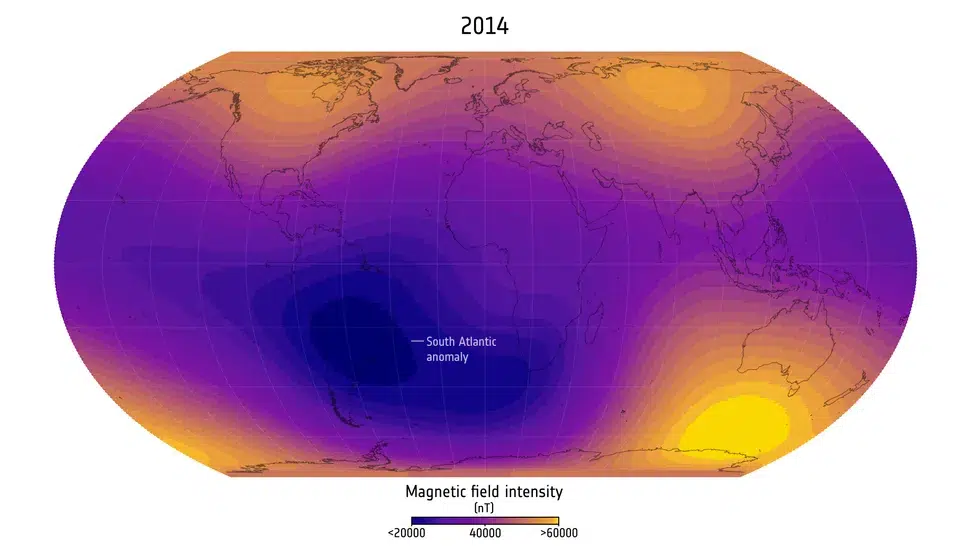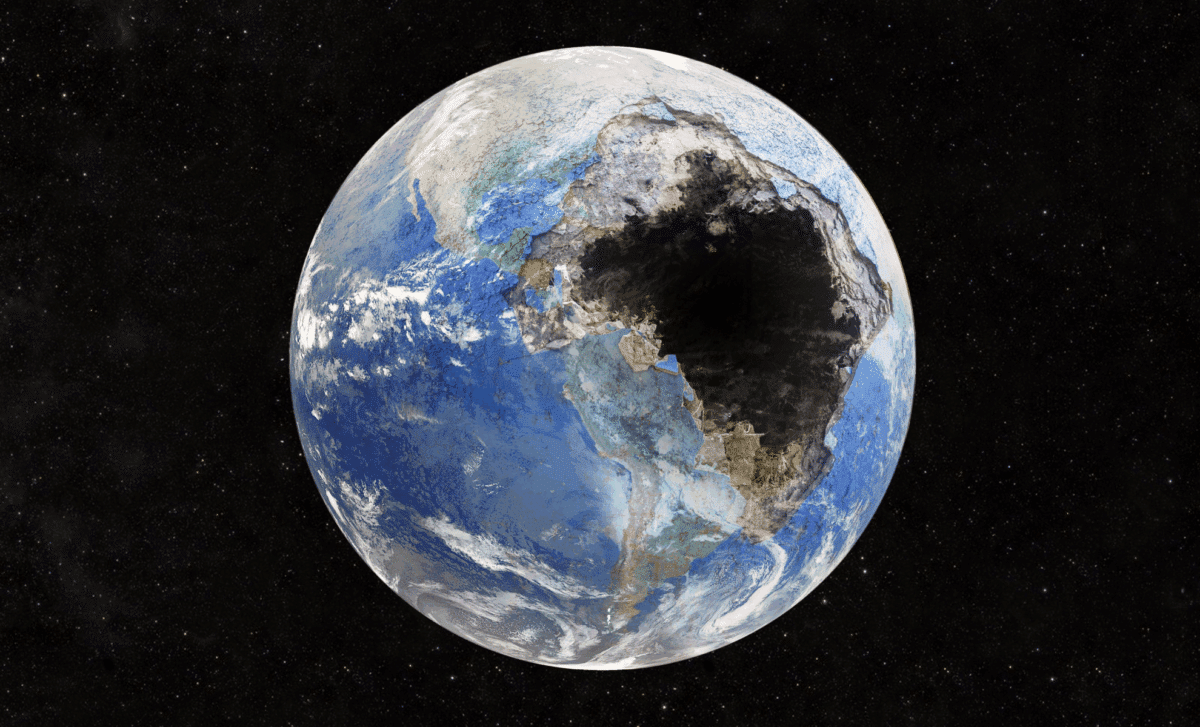A vast weak spot in Earth’s magnetic field is quietly expanding over the South Atlantic Ocean. Scientists say the phenomenon, known as the South Atlantic Anomaly, could expose satellites and astronauts to higher doses of radiation. Measurements from European Space Agency satellites show this anomaly is not only persisting but growing faster than expected. The implications reach far beyond Earth’s atmosphere — right into the heart of human space exploration.
A Growing Anomaly Deep Beneath Earth’s Surface
A new study published in the journal Physics of the Earth and Planetary Interiors reveals that the South Atlantic Anomaly (SAA) — an already weak patch in the geomagnetic field — has expanded dramatically over the past decade. The findings are based on data collected by the European Space Agency’s Swarm satellites, a trio launched in 2014 to monitor the planet’s magnetic signals in real time.
“The region of weak magnetic field in the South Atlantic has continued to increase in size over the past 11 years since the launch of the Swarm satellite constellation,” explained Chris Finlay, a geomagnetism researcher at the Danmarks Tekniske Universitet. “Although its growth was expected based on early observations, it is important to confirm this change in Earth’s magnetic field is continuing.”
 (Image credit: ESA (Data source: Finlay, C.C. et al., 2025))
(Image credit: ESA (Data source: Finlay, C.C. et al., 2025))
Finlay, the lead author of the study, emphasized that the anomaly now covers an area roughly half the size of continental Europe — a striking indicator of just how dynamic and unpredictable our planet’s magnetic shield can be.
Beneath this region, at depths of nearly 1,800 miles, molten iron currents circulate in complex patterns that generate the geomagnetic field.
“It is related to the circulation patterns of the liquid metal in the core, but we are not certain of the exact cause,” Finlay said.
The study suggests that shifts in these subterranean flows may be fueling the magnetic imbalance, yet the precise mechanisms remain elusive.
 (Image credit: ESA (Data source: Finlay, C.C. et al., 2025))
(Image credit: ESA (Data source: Finlay, C.C. et al., 2025))
Satellites And Spacefarers At Greater Risk
For satellites and astronauts, this growing weak zone is far from a theoretical problem. “The main consequence is for our low-Earth-orbit satellite infrastructure,” Finlay said.
“These satellites experience higher rates of charged particles when they pass through the weak field region, which can cause problems for the electronics.”
Spacecraft entering the SAA are bombarded by energetic solar particles that would normally be deflected by a stronger magnetic field. These encounters can cause temporary system glitches, data corruption, and even full-scale blackouts. For crewed missions, the radiation spike raises health concerns. Astronauts aboard the International Space Station, which occasionally passes through this region, face an elevated risk of DNA damage and long-term cancer development.
Finlay warns that this trend is accelerating:
“Since the weakness is growing, the satellites will experience such effects over a larger area, [so] this should be taken into account when designing future missions.”
Engineers are now urged to “harden” spacecraft systems to withstand higher radiation doses, anticipating that the SAA could keep spreading in the coming decades.
Understanding Earth’s Shifting Magnetic Field
Despite the alarming tone of these findings, scientists do not believe Earth’s magnetic field is about to flip — a process that has occurred hundreds of times in geological history. Instead, what’s unfolding appears to be a long-term fluctuation linked to the dynamic movement of molten iron inside Earth’s core.
The Swarm satellites have been crucial in detecting these subtle but significant changes, offering the most precise measurements of the geomagnetic field ever recorded. They reveal that while the South Atlantic field is weakening, regions over northern Canada and Siberia are simultaneously strengthening or contracting, suggesting a constantly evolving balance in the planet’s magnetic structure.
Researchers continue to stress the need for continuous, high-quality data collection. Understanding these deep-Earth processes could help forecast space-weather risks and improve the design of satellites and exploration missions — both around Earth and beyond it.

